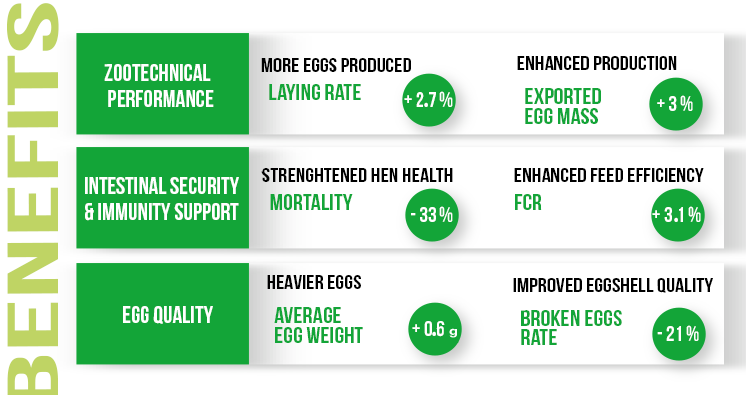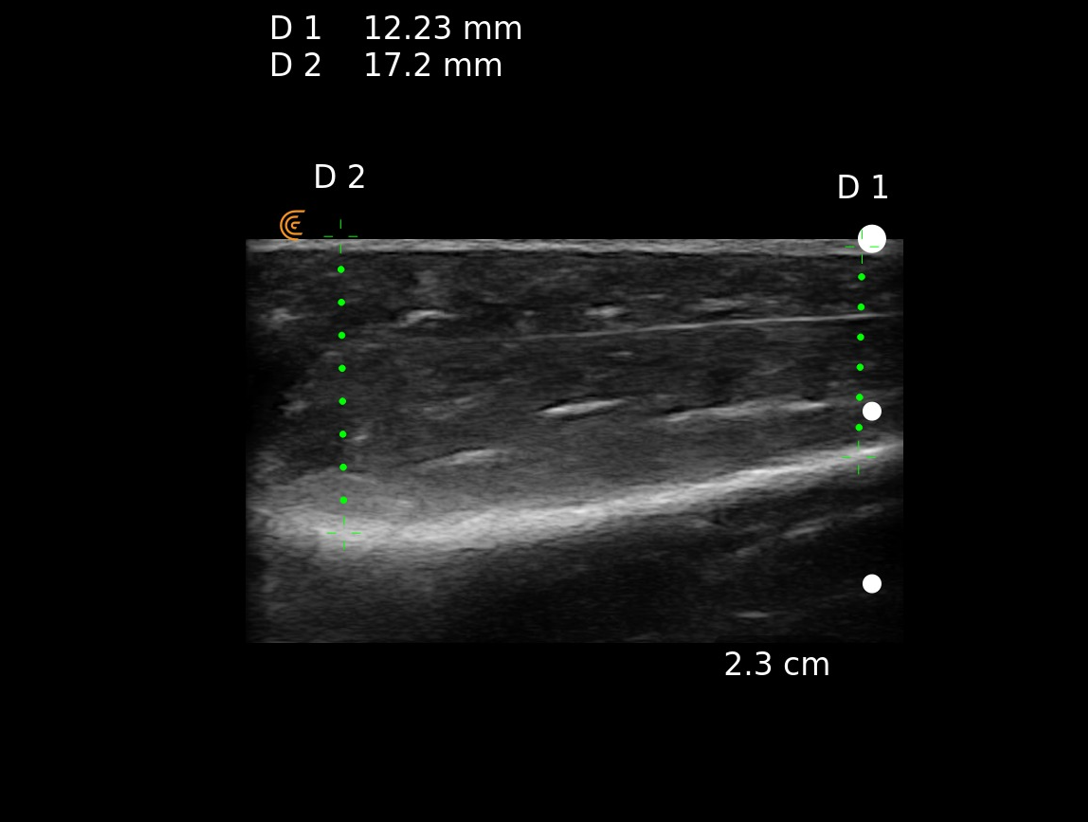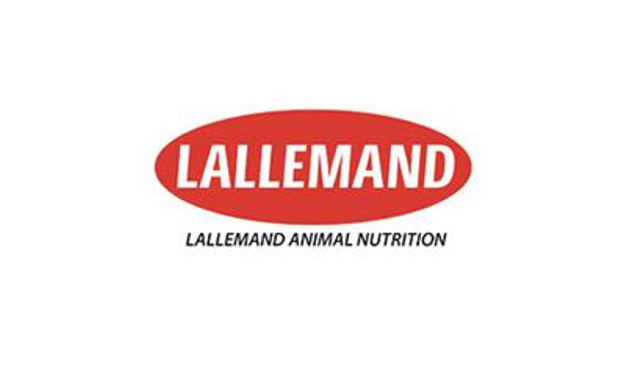



20 years of breakthrough probiotic performance in layers
Novel method to assess pectoralis muscle developmentThe poultry industry and scientific community acknowledge the interest of probiotics to sustain modern productions: for both zootechnical improvements and sanitary control, live microorganisms are now routinely used in the field.
Over the past two decades, literature has extensively (above 100 publications) documented the use of the probiotic Pediococcus acidilactici CNCM I-4622 (Bactocell). This lactic acid bacteria was specifically selected for monogastrics for its ability to produce exclusively high levels of the L form of lactic acid, that is a direct source of energy for the birds: through its absorption at gut epithelial level or indirectly through a cross-feeding pathway (substrate for short-chain fatty acids producing bacteria, like butyrate producers). The first scientific trial in layers was published in 2005, and many followed since then, all over the world. Improved and more persistent laying rate, better eggshell quality are important parameters for producers, especially with the current extended laying cycle. A meta-analysis of 62 studies (both academic and field trials from 25 different countries) aiming at assessing the impact of this probiotic on the production performance of layers was performed (all trials at commercial dose: 1x10e9 CFU/kg of feed, using different but commonly used genetic lines).

The studies were subjected to statistical analysis, using a Mixed Model approach, including treatment (supplemented or not), trial type (academic vs. field), housing type (cage: Yes vs No) and production phase (Full cycle: > 5 months; start of lay:18-35 weeks of age, middle of lay: 35-55 weeks old, end of lay:55-80 weeks old, extreme end of lay: > 80 weeks) as fixed effects. Additionally, the study was introduced as a random factor.
An important outcome of this meta-analysis is the consistency of zootechnical performances, regardless of the type of study, housing, or production phase for laying rate and egg weight. FCR was impacted by housing, being significantly lower in cages but with increased mortality. Supplementation with the probiotic significantly improved the laying rate by 2.7% (P<0.01) and reduced FCR by 3.1% (P<0.01). The average egg weight was 0.6 g higher for the Bactocell-supplemented hens (P<0.05). Higher laying rates and heavier eggs led to a significantly higher exported egg mass (0.361 vs 0.372 kg/hen/week; P<0.001). In addition, the incidence of broken/downgraded eggs was substantially reduced by 21% (P<0.05). The use of Bactocell in the feed reduced mortality by 33% (3.1 vs 4.6 %; P<0.01) with a more pronounced for layers in non-cage systems compared to cages (-36% vs -24% respectively, P<0.05). Overall, this powerful meta-analysis, highlights the benefits of using Bactocell on laying hens, whatever the housing or production phase (Demey et al., 2024).

Breast muscle: a good predictor of future performance.
Manual palpation of breast muscle is common practice as it is known to correlate with good laying persistency: the higher the muscle score, the better the egg production. With this objective in mind, pullet preparation is a key factor in conditioning short- and long-term layer efficiency. Previously, average body weight and weight homogeneity were the main criteria used to evaluate pullet quality. However, recent published papers confirm that body live weight assessment alone is not sufficient and the importance of muscle development and protein deposition in the persistency of the laying curve has been highlighted (Vignale et al., 2018). This criterion, also called a “fleshing score” is commonly used in breeders to monitor body development in birds delivered to farm, to check body condition throughout the laying cycle or evaluate the homogeneity of the flock at different critical stages. Many different strategies have been investigated to improve protein deposition but result in variable response and/or increased production costs (feed restriction, increased crude protein and amino acid supply). Interestingly, some authors have highlighted the benefit of using probiotics in laying hens to better regulate lipid metabolism, reduce fat deposition and cholesterol concentration, but a clear lack of consistency between different studies is apparent. Recently, several published studies were analyzed, evaluating the impact of the well documented strain Pediococcus acidilactici CNCM I-4622 on lipid metabolism; especially Cholesterol content within blood and egg yolk (table 1).
Table 1: Cholesterol content changes using Pediococcus acidilactici (CNCM I-4622)
Country, Year |
Egypt, 2004 |
Egypt, 2004 |
Algeria, 2006 |
Algeria, 2009 |
Bulgaria, 2008 |
Bulgaria, 2008 |
France, 2008 |
Poland, 2009 |
Matrix |
Serum layer |
Yolk layer |
Serum broiler |
Serum broiler |
Serum layer |
Yolk layer |
Yolk layer |
Yolk layer |
Supplementation duration |
7 weeks |
8 weeks |
56 days |
49 days |
12 weeks |
12 weeks |
6 weeks |
8 weeks |
Cholesterol reduction |
-15% |
-12% |
-23% |
-31% |
-18.7% |
-38.5% |
-15% |
-10% |
A recent study with layers fed a standard energy diet, showed a numerical abdominal fat reduction when using Bactocell (4.47% vs 3.93% BW) (Milkulski et al., 2020), but this method required bird euthanasia, so would not be appropriate for routine investigation on farm.
Consequently, a novel, non-invasive, method was developed to accurately investigate protein deposition in hens, using a standardized protocol and an ultrasound scanner to enable fast and repeatable measurements on a significant number of randomly selected birds (automatic data recording: minor/major pectoralis muscle depth primarily).

Various trials conducted with Bactocell in commercial layers have shown consistent, positive, and significant results on muscle thickness (Table 2). This method provides in-depth quantitative information compared to manual palpation and/or weight check. The significant muscle depth improvement shown supports the well-recognized effect of Bactocell on protein deposition.
Table 2: Improvement of muscle development with Bactocell using an ultrasonography device.
Country, Year |
France, 2020 |
France, 2021 |
France, 2023 |
Italy, 2024 |
France, 2024 |
Species |
layers |
layers |
pullets |
layers |
broilers |
Supplementation duration |
6 weeks |
6 weeks |
16 weeks |
5 months |
13 days |
Pectoralis muscle depth |
+2% |
+2% |
+29% |
+27 |
+6% |
The effect of Bactocell on protein deposition was already documented in layers in 2011, where Allemand et al, demonstrated a reduction of crude protein (CP) levels in the feces of layers fed Bactocell (4.00 vs 6.07%), echoing a trial in canulated piglets (end of ileum) showing a 3.4% (p<0.01) increased ileal digestibility of CP (Chevaux et al., 2006).
The apparent improvement in CP digestibility can also be supported by a reduction in endogenous losses of important amino acids (AA) such as tryptophan, methionine, threonine, glutamine, as well as a reduction in their requirement when chronic inflammation processes are reduced. A higher inflammatory status results in increased requirements for specific dietary AA which are diverted from muscle deposition and redirected for use in inflammatory protein formation and immune response (Reeds, 2000; Obled, 2003). Recent studies clearly show reduced intestinal inflammation and reduced proteolytic bacteria activity in birds fed Bactocell. These are two positive outcomes for protein retention, since protein fermentation by the ileal proteolytic microbiota significantly reduces the availability of essential AA, their absorption and deposition in muscle (Diether et Willing, 2019). Bactocell application for improved pullet preparation and its continuous use throughout the laying cycle, appears to be a promising strategy to secure gut health, positively balance the intestinal microbiota, and reduce chronic inflammation and its consequences (less endogenous losses, reduced proteolytic fermentation) to improve muscle deposition and sustain improved laying hen performance.










